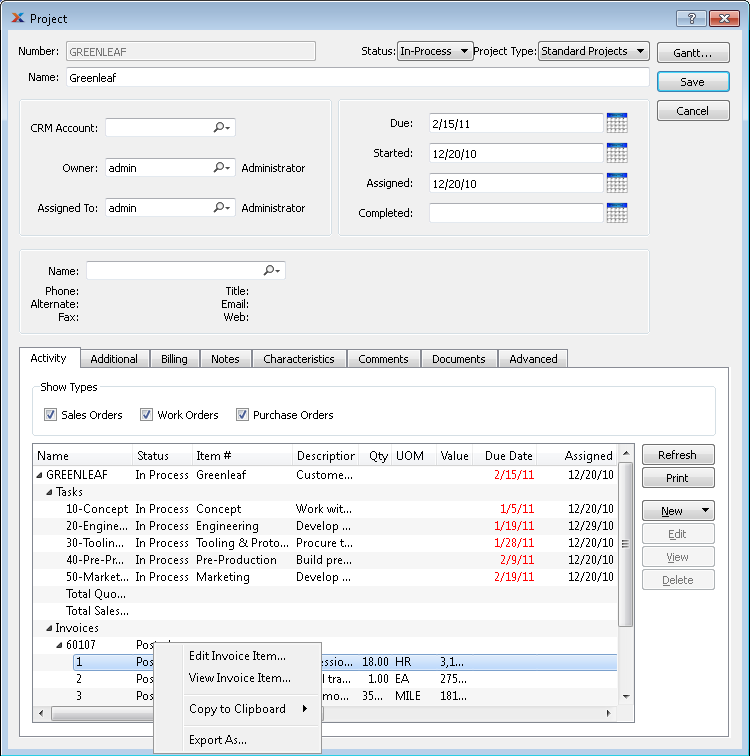
|
xTuple for Service Businesses Demo Guide |
In this section we will be taking a summary approach to the subject matter. So if you find there are specific field-level details you would like to learn more about, then please also consult the xTuple ERP Reference Guide.
Let's begin with basic navigation. To locate projects in xTuple ERP, follow this path . For the purpose of illustration, we will be using the "Greenleaf" project which can be found in the demo database distributions of xTuple ERP.

The first page of the Project screen is where you enter the basic project information, such as project number, name, and description. The project number is of particular interest because this is the text string which is used by project accounting to build the virtual G/L accounts that are central to that feature set.
Right at the top of the screen you'll notice the status indicator. This is an important feature, as a project's status determines whether the project is available to be used. For example, time & expense time sheets can only be entered against projects which have an In-Process status. Similarly, the Complete status indicates the project is no longer active and time sheets cannot be entered against it. Use the Concept status while you are initially putting a project together―and before you bring it officially online.
The buttons for and are added by the project accounting package. When selected, these buttons bring you to project-specific reports only available with project accounting.
Also on this first project page you define project ownership and accountability. In many cases, the owner of a project will be the project manager. And the assignee will be a staff member charged with responsibility for executing project tasks. Here also we establish calendar targets―that is, due dates and started and completed dates.
Finally, we have the option to make the project linkable to various order types: sales orders, purchase orders, and work orders. For the Greenleaf project in our screenshot, we selected all of the order options. This means we can link the Greenleaf project to any of those kinds of orders, thereby allowing us to get the broadest view possible of project activity and costs. Of course, making projects assignable to orders is optional. And, the order types you choose to make assignable, if any, can vary from project to project.
An overview of project activity is displayed on the tab.

As you can see in the screenshot, Invoices also show up linked to projects. These invoices result from services being billed out via time & expense time sheets.